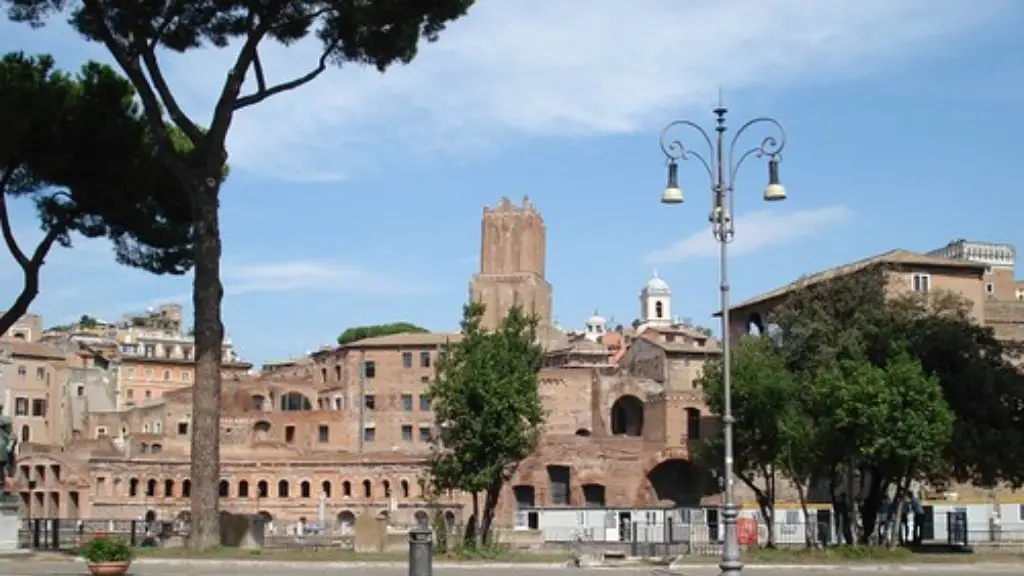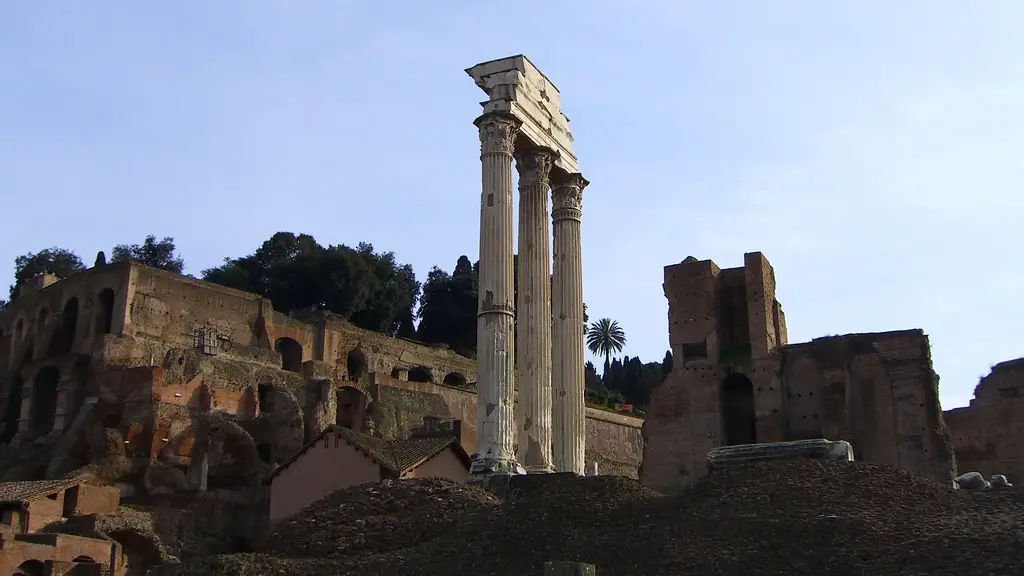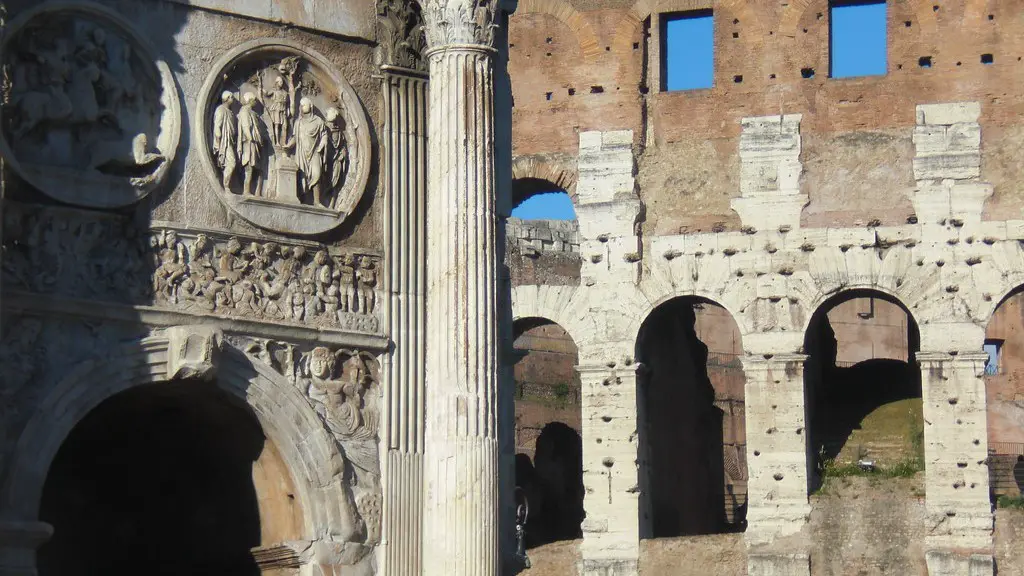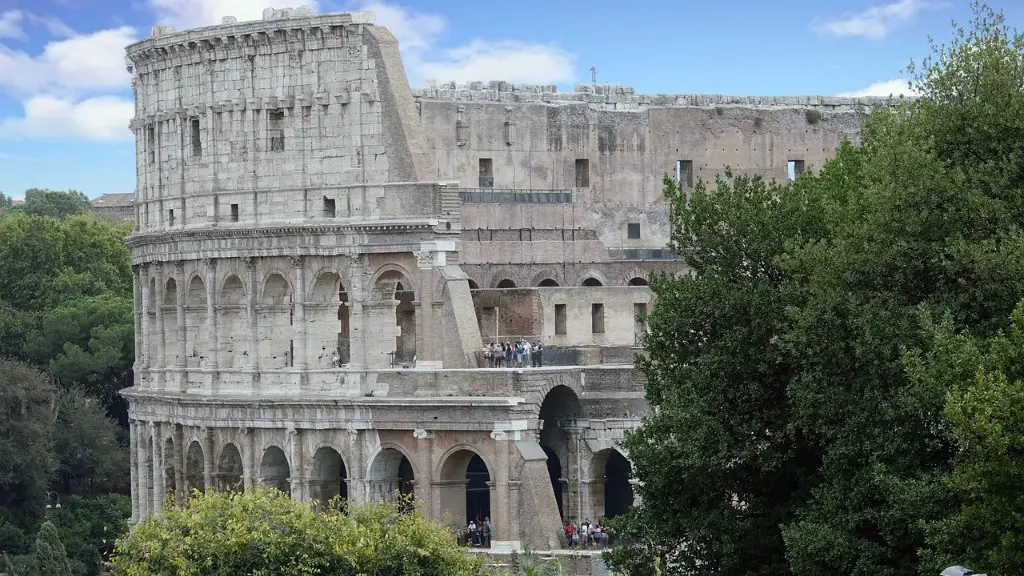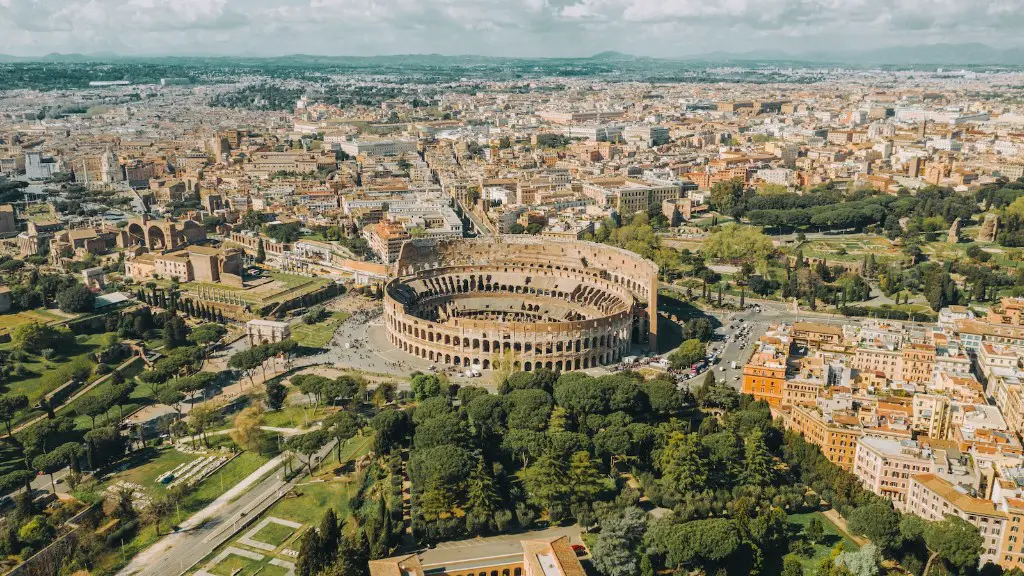Ancient Romans loved their wine. From the earliest period, wine was a significant part of the Roman diet and culture. It is no surprise then that the Romans developed innovative methods for storing the beverage for the longer term. A number of archaeological finds, however, show that the Romans most likely stored wine in amphorae, an earthenware pottery vessel from the Mediterranean region.
In fact, archaeological discoveries suggest that the Romans were the first to come up with the concept of storing wine in containers made of clay. For example, several ancient sites of the classical Roman period have discovered amphorae. These ceramic containers featured large mouths at the tops, which could hold more than 30 liters, and they were often used to transport and store wine, oil and other goods.
The Romans were known to have used amphorae to store wine, and this is evidenced by the fact that these vessels were found in various locations throughout the Mediterranean. For example, a number of amphorae were found in Pompeii, a city that was destroyed by the eruption of Mount Vesuvius in 79 AD. The excavations of the city revealed hundreds of amphorae that were filled with wine. In addition, amphorae have also been found in the remains of Roman villas and other important sites.
The Romans also used a variety of other methods to store their wine. They would often bury the amphorae in the ground with the belief that it would protect it from the elements, as well as from theft. Additionally, the Romans would sometimes place the amphorae in large wooden barrels, which could hold up to 100 liters of wine.
Archaeological evidence also suggests that the Romans made use of terracotta clay vessels, which were used to store wine as well. These vessels had a large, circular opening and featured a long neck. They could hold 33 liters of wine, and were likely buried in the ground in order to keep them from spoiling.
The Romans also made use of amphorae for transport as well as for storage. These vessels were commonly used to transport goods, including wine, oils and other goods. The vessels were usually sealed and stamped with the owner’s stamp or a signet ring containing the owner’s name and seal. This served as a way of identifying the goods and ensuring their safe transport.
From the archaeological evidence, it is clear that the ancient Romans used a variety of methods to store their wine. From large terracotta vessels to small amphorae, the Romans used a range of vessels to ensure their wine stayed fresh and safe. In all likelihood, this innovative approach to storing wine helped to ensure that Roman wines were of the highest quality.
Ancient Roman Winemaking
In the ancient world, wine was a major part of Roman culture and society. It was used in a variety of ceremonies and was the central element of many religious festivals. In addition, wine was also an important part of Roman cuisine and was used for medicinal purposes as well. As a result, the Romans developed unique methods of making, storing and drinking wine.
When it came to making wine, the Romans had mastered commercial winemaking by the 1st century BC. They used grapes from vast vineyards throughout the region and developed the technique of “maceration”, which is the process of pressing the grapes and then fermenting them. This process produced a full-bodied, complex flavor. The Romans also developed techniques for fining and filtering wine, and aging it in oak barrels.
In terms of storing wine, the Romans had a variety of methods that they used. In addition to the terracotta vessels and amphorae, they also used wooden barrels, which were often buried in the ground. The Romans believed that this would protect the wine from spoilage, as well as theft and contamination. Other popular methods of storage included clay jars and ceramic flasks, as well as bronze and glass vessels.
The Romans also used a variety of different drinking vessels for their wine. Aside from large amphorae, smaller vessels made from clay or pottery were used for drinking wine. These were often decorated with designs and were used for personal or ceremonial use. In addition, the Romans also made use of bronze vessels, which were often adorned with intricate carvings and images of gods and goddesses.
Conclusion of the Roman Empire
By the late 4th century, the Roman Empire had nearly come to its end. It had suffered centuries of attacks and invasions, which had wreaked havoc on its economy and its population. As a result, its wine production and consumption also declined significantly. Despite this, the legacy of the Romans’ winemaking and storage techniques still remain, and many of these methods are still being used today.
Over the centuries, the Roman Empire’s expertise and innovation in winemaking and storage has had a lasting impact on the world of wine and winemaking. Their creative storage methods and drinking vessels may have been revolutionary in their time, but they remain deeply rooted in both modern culture and winemaking today.
The Last of Roman Winemaking
By the 5th century, the Roman Empire had completely collapsed and the production of wine had largely come to an end. However, even in its last days, the Romans were still making wine in some parts of the Empire. In North Africa, for example, the Romans were still producing and exporting wine up until the 7th century. In Britain, wine production was also still occurring, despite the decline in trade with other parts of the Empire.
Despite the fact that the Romans had largely ceased to exist, the legacy of their winemaking and storage methods lived on. As the centuries passed, many of the techniques they developed in storing, preserving and consuming wine were adopted by other societies and cultures. This included the use of amphorae, terracotta vessels, and wooden barrels.
In addition, the Romans’ techniques for making and storing wine were also passed down through the ages. Today, modern winemakers still make use of many of these techniques, including the processes of maceration, fining and aging, and oak barrel storage. These techniques continue to be used all over the world, from Bordeaux to California.
The Roman Legacy
It is clear that the legacy of Roman winemaking and storage techniques will continue to have an impact on the world of wine for many years to come. While the Romans may have been the first to use amphorae, terracotta vessels and wooden barrels to store and transport their wine, these same techniques are still being used in the modern world. Furthermore, the processes that the Romans developed for making and aging wine remain just as relevant and important today as they ever were.
The Romans had an incredible impact on the world of wine that can still be seen today. Not only did their creative storage methods help to protect their wines from contamination and spoilage, but their winemaking technique and production processes continue to be used all over the world. In the centuries since the fall of the Roman Empire, the memory of the Romans’ incredible winemaking skill and knowledge has been passed down, ensuring that their legacy will live on for a long time to come.
The Continued Popularity of Ancient Roman Wine
Despite the fact that the Roman Empire has been gone for centuries, its wine is still incredibly popular. In Italy, some of the oldest vineyards in the world still produce wines that use the same techniques used in Roman times. Furthermore, these wines have been embraced by modern winemakers worldwide, who continue to use traditional methods to craft delightful wines.
In addition, there are also many modern winemakers who specialize in producing “Roman style” wines, using the same techniques and processes that were employed by the Romans. This includes the use of amphorae and other special containers, as well as the processes of maceration, aging and fining. As a result, it is easy to find excellent wines with a distinctly Roman flavor.
The Roman Empire may have faded centuries ago, but their influence on the world of wine still remains. Their creative storage methods, winemaking techniques, and even their drinking vessels can still be seen in the modern world. From large amphorae to small clay vessels, these Roman inventions continue to be used all over the world to store and transport some of the most delicious wines.
The Impact of an Ancient Culture
It is a testament to the Roman Empire that its influence on the world of wine can still be felt centuries after its demise. From the use of amphorae to the modern revival of traditional maceration techniques, the Romans have left a lasting mark on the history of winemaking. While the ancient Roman Empire may have been gone for centuries, its impact on winemaking and wine storage has ensured that its memory will live on for centuries.
Furthermore, the influence of the Romans can also be seen in other aspects of modern cuisine and culture. Their use of simple ingredients, creative storage, and gastronomic innovations provided the foundation for the international flavors and dishes enjoyed today. From pasta to pizza to paella, the influence of the Romans can be seen in modern kitchens around the world.
Even today, the legacy of the Romans lives on in the world of winemaking and storage. From amphorae to wooden barrels to terracotta vessels, the Romans’ contributions to the craft have greatly expanded the range of wines available today. In addition, their winemaking and storage techniques have provided the inspiration and knowledge needed to craft some of the most iconic wines in the world.
